Editorial
Political cost of sobering reality

Saturday 2nd November, 2024
The latest fuel price revision has landed the JVP/NPP government in an unenviable position, with only 12 days to go before the next general election, where the ruling alliance’s stakes are extremely high. Unless the NPP succeeds in obtaining a working majority in Parliament, newly-elected President Anura Kumara Dissanayake will run the risk of being reduced to a mere figurehead, to all intents and purposes.
Only the prices of 95 Octane petrol and Super Diesel have been reduced much to the disappointment of the ordinary people, who mostly use 92 Octane petrol and Auto Diesel. The government would not have found itself in this situation but for its much-advertised election pledge to deep-six the fuel pricing formula and slash the prices of petrol, diesel and kerosene. It would have been prudent for the JVP/NPP to leave all fuel prices unrevised at this juncture.
Cabinet Spokesman and Minister Vijitha Herath has claimed that the so-called pricing formula is not the sole basis on which fuel prices are revised monthly. If so, why hasn’t the government reduced the prices of the widely used fuel types? The fuel price revision at issue may make economic sense because the cost reflective pricing helps reduce state expenditure, but it has come at a political cost to the NPP, which raised the people’s expectations by offering to reduce taxes on fuel, eliminate corruption in the Ceylon Petroleum Corporation and slash the prices of petrol and diesel immediately after capturing power. Its rhetoric led most people to believe that diesel and petrol would be available again at the pre-crisis prices.
Three-wheeler drivers, who use 92 Octane petrol, are the most vociferous critics of how the government is handling fuel prices. It was not out of altruism that the trishaw fraternity campaigned hard for JVP/NPP leader Dissanayake in the presidential race. They obviously expected economic benefits in return under an NPP government.
President Dissanayake never misses an opportunity to declare that he cannot perform miracles. But he made himself out to be a miracle man when he was an Opposition MP. He would wax eloquent in Parliament, telling successive governments how to slash taxes and tariffs, grant relief to the public and lower the cost of living. Therefore, it is only natural that the people expect miracles under his presidency. The JVP-led trade unions staged protests and even strikes, demanding pay hikes, and the JVP/NPP sought to rubbish the then rulers’ claim that salary increases could be granted only through the annual Budgets. The JVP/NPP has now made an about-turn; it says it will consider the state sector pay hikes when the next Budget is presented.
It is not being argued that the NPP government should reduce fuel prices and increase the public sector salaries haphazardly at the expense of the economy. The Opposition should refrain from trying to recover lost ground by pressuring the government to do things that would hurt the economy. The government is right in adhering to the cost-reflective fuel pricing and insisting that pay hikes cannot be granted at this juncture. Even if Ranil Wickremesinghe had won the September presidential election, he would not have been able to do what he is now asking the NPP government to do.
The JVP/NPP leaders must be regretting the many promises they made to win the presidential election. The biggest challenge before the government, which has come to terms with the sobering economic reality, is to make the public, whose expectations it elevated beyond measure, to do likewise and exercise patience. Unfortunately for the JVP/NPP, patience is not a virtue associated with Sri Lankans, who want election promises to be fulfilled the way hoppers are baked.
Editorial
Of that half-open can of worms
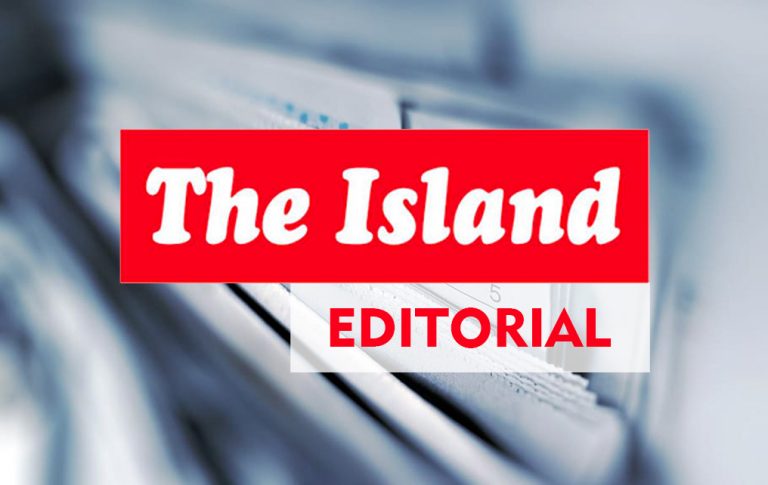
Wednesday 25th December, 2024
The CID has once again proved its selective efficiency and adeptness at doing political work. No sooner had it received a complaint from Justice Minister Harshana Nanayakkara that someone had sought to discredit him by having the title, ‘Dr’, placed before his name on the parliamentary website than it launched an investigation, interrogated the parliament staff and recorded statements, but its probe has apparently come up against a brick wall.
Parliament workers have reportedly informed the CID that the titles given to the NPP MPs on the House website are based on information contained in a letter sent by the office of the Leader of the House, Bimal Ratnayake. What is described as an image of the letter in question is doing the rounds in the digital realm. The government has chosen to remain silent on the letter and the progress in the CID probe, which is bound to open a can of worms for it.
What will the CID do now? Will it grill the staff of the Leader of the House as well? It will be interesting to see what the government’s reaction is. Will the Justice Minister, who thinks there has been a sinister campaign against him, urge the CID to go the whole hog and get to the bottom of it?
Strangely, an official of the Parliament Communication Department apologised to Minister Nanayakkara for what he called an inadvertent data entry error which had led to the placement of ‘Dr’ before Nanayakkara’s name. He issued a statement to that effect when the Opposition raised questions about the academic credentials of the NPP MPs. He owes an explanation to the public.
Minister Nanayakkara, after lodging his complaint with the CID, told the media that he suspected that there was a conspiracy to tarnish his image. Implying the involvement of his political opponents in ‘the conspiracy’, he went on to claim that ‘the dog’ (read the previous dispensation) had been got rid of but there were some ‘fleas’ left, and they too would be dealt with appropriately. He also expressed concern about what he called a counterrevolution.
The Justice Minister has caused a great injustice to man’s best friend. The NPP won elections by condemning the members of the previous government as a bunch of crooks who deserved to be behind bars for their many crimes; they included a politician who lined his pockets at the expense of cancer patients. Now, the Justice Minister likens those characters to canines!
The mention of ‘counterrevolution’ must have sent a chill down the spines of those who are au fait with world history, especially the brutal manner in which some self-proclaimed socialist regimes dealt with ‘counterrevolutionaries’; they resorted to witch-hunts and kangaroo trials which led to the elimination of dissenters. This country is no stranger to savage political violence.
Going by the aforesaid leaked letter, a wag asks whether the office of the Leader of the House has become the cradle of the ‘counterrevolution’ and home to the ‘fleas’ that have left the ‘dog’ in flight.
It defies comprehension why Minister Nanayakkara made a beeline for the CID over the doctorate issue. He should have taken it up with the Speaker and the Secretary General of Parliament and asked for remedial action. That is the proper procedure. Unfortunately, aspersions are now being cast on certain parliament officials.
The NPP parliamentary group has some members who served in previous parliaments and therefore are familiar with parliamentary affairs, and it is incumbent upon them to guide their junior colleagues.
Editorial
Grim Reaper in overdrive

Tuesday 24th December, 2024
A sharp increase in fatal road accidents during the past few weeks has jolted the police into inspecting vehicles to check their roadworthiness. As many as 13 lives were lost in road mishaps on Saturday (21). It is believed that many such accidents occur due to the sheer number of unroadworthy vehicles on the road, posing safety risks to motorists, passengers and pedestrians alike. The police must step up inspections and prosecute the drivers and owners of unsafe vehicles.
In 2023, about 2,500 lives were lost in 2,200 road accidents in Sri Lanka, according to the police. Pedestrians accounted for the highest number of road traffic fatalities––more than 740.
Legal action must be instituted against those who issue bogus fitness certificates for unroadworthy vehicles, especially buses and trucks. If the existing laws do not provide for deterrent punishment for them, new ones will have to be introduced as a national priority.
A World Bank (WB) report, Delivering Road Safety in Sri Lanka Leadership Priorities and Initiatives to 2030, provides a number of valuable insights into the deterioration of road safety in Sri Lanka, and spells out what needs to be done to remedy the situation. The following, inter alia, have been identified as the causative factors: an increase in the number of vehicles, poor road maintenance, improper road expansion, less scrutiny in issuing driving licences, ineffectiveness of the authorities in penalising road traffic offences, and inefficiency of public transport system. Citing anecdotal evidence, the report points out that speeding, drunk driving, fatigue, tyre bursts, animal crossing and unprotected level crossings are some other causes of road accidents. The ever-increasing narcotic addiction among drivers of heavy vehicles has also become one of the main causes of road fatalities.
The aforesaid WB report informs us that Sri Lanka will need an additional investment of USD 2 billion to achieve the Sustainable Development Goal (SDG) 3.6 target of a 50% reduction in national road crash fatalities. Given Sri Lanka’s economic crisis, such a huge investment is not within the realm of possibility, but it is a goal that the country must work towards. There are several practicable measures that can be adopted to save lives in the meantime, vehicle inspections being one of them.
Thanks to stern police action, drunk driving menace is believed to have been brought down to a manageable level, but there has emerged another problem—narcotic addiction among bus and truck drivers.
Lanka Private Bus Owners’ Association President Gemunu Wijeratne is on record as having said that 50% bus drivers and conductors are addicted to drugs countrywide. In 2021, then State Minister Dilum Amunugama revealed that 80% of the bus drivers in Colombo and its suburbs worked under the influence of narcotics. A pilot project conducted by the police last year helped nab about 100 drug addicts behind the wheel. Most of them were addicted to crystal methamphetamine popularly known as ICE. This points to the pressing need for random narcotic detection tests to be increased.
The least that can be done to reduce road accidents and save precious lives is to have the police step up operations to nab drug/alcohol addicts behind the wheel, rein in reckless drivers, find unroadworthy vehicles and bust rackets related to the issuance of driving licences and vehicle fitness certificates. That may be the way to make the Grim Reaper, currently in overdrive, downshift and slow down until a comprehensive road safety programme is launched with the participation of all stakeholders to achieve the SDGs.
Editorial
Seeyanomics, rhetoric and reality

Monday 23rd December, 2024
The much-awaited good news has come at last. On Friday, Fitch Ratings upgraded Sri Lanka’s Long-Term Foreign-Currency Issuer Default Rating (IDR) to ‘CCC+’, from ‘RD’ (Restricted Default). Heartening as this positive development is, it by no means indicates that the Sri Lankan economy is out of the woods yet; what it signifies is that the economic crisis management measures are yielding desired results, but there is much more to be done for full recovery to be achieved.
Sri Lanka’s bankruptcy was an orphan, but the rating increase has many fathers, including the NPP leaders, who try to justify their inability to find immediate solutions to other burning issues such as the escalating prices of rice and coconuts by claiming that ‘children are not born immediately after honeymoons’.
Sri Lanka’s rating improvement is no mean achievement, and the credit for it should go to the ordinary people, who have been bearing untold hardships in the name of economic recovery, the IMF, other lending institutions, the countries such as India, which granted much-needed loans for the procurement of essentials to prevent this country from descending into anarchy, the officials of the Finance Ministry and the Central Bank, and former President Ranil Wickremesinghe, who had the courage to adopt unpopular yet essential measures to tackle the economic crisis.
Ironically, the amount of Sri Lanka’s foreign debt which has been restructured is almost equal to what the UNP-led Yahapalana government borrowed, according to what ousted President Gotabaya Rajapaksa has said in his book, ‘The Conspiracy’ (p. 25). Rajapaksa says the UNP-led government (2015-2019) issued International Sovereign Bonds (ISBs) to the tune of USD 12 bn, and towards the end of 2019, the country’s outstanding ISBs amounted to about USD 15 bn, and its total foreign reserves were at USD 7. 6 bn whereas at the end of 2014, when the Mahinda Rajapaksa government collapsed, the outstanding ISBs totalled only USD 5 bn.
If so, one can argue that Wickremesinghe has only helped right a wrong the Yahapalana government committed. The JVP backed the UNP-UPFA coalition, which was on a borrowing spree, and propped up the UNP, after the UPFA’s breakaway in 2018, although the JVP leaders and Wickremesinghe are at daggers drawn at present.
The holier-than-thou SJB bigwigs were in the Yahapalana Cabinet, which was responsible for reckless borrowing. The TNA, the SLMC, etc., also supported the Yahapalana administration, especially the UNP. The SLPP bankrupted the economy. Thus, no party represented in the current Parliament can absolve itself of the blame for the country’s economic crisis.
The JVP-led NPP has stooped so low as to resort to ageism in a bid to ridicule Wickremesinghe; it calls him a seeya (grandpa) with his productive years behind him, but his ‘seeyanomics’ seems to have worked, and it is now up to the NPP leaders who consider themselves youthful, in spite of being in their 50s, 60s and 70s, to ensure that the current economic recovery process will stay on course.
What they as well as the Opposition must do is to stop playing politics with the ongoing bailout programme. Thankfully, the NPP has realised the gravity of the economic situation since its ascent to power and refrains from carrying out some of its election promises, the implementation of which would have caused a drastic drop in state revenue. But it will have to ensure that its relief programmes are properly targeted.
The Opposition, especially the SJB, should also act responsibly, without trying to earn brownie points with the public at the expense of the economic recovery efforts. It should stop pressuring the government to do things that are bound to entail heavy economic costs, such as haphazard tax cuts, huge pay hikes for the public sector workers and ad hoc relief measures.
That the NPP made a host of Machiavellian promises, while in opposition, to capture power is no reason why the SJB, etc., should try to make the incumbent government do what will stand in the way of economic recovery.
Meanwhile, the government has unveiled a proposal to effect PAYE tax reductions and increase the withholding tax (WHT) from 5% to 10%. It says those who receive less than Rs. 150,000 a month by way of interest income will not be affected by the WHT hike, but the proof of the pudding is said to be in the eating.
Now that the government has promised tax relief to professionals, it must ensure that the state employees who will benefit from the proposed PAYE reductions earn their keep by working diligently; they must be made to use biometric attendance marking systems like other workers, and their outputs should be regularly assessed.
-
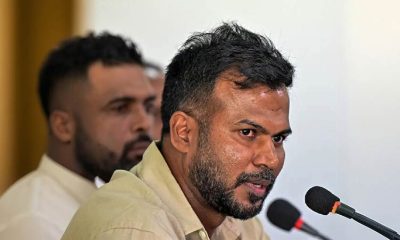
 Sports6 days ago
Sports6 days agoSri Lanka to mend fences with veterans
-

 Sports4 days ago
Sports4 days agoPathirana set to sling his way into Kiwi hearts
-
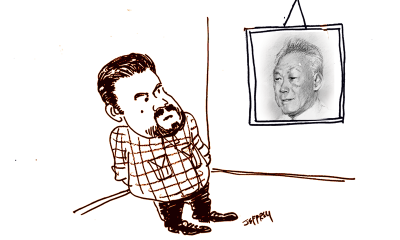
 Opinion6 days ago
Opinion6 days agoIs AKD following LKY?
-

 Editorial7 days ago
Editorial7 days agoHobson’s choice and U-turns
-
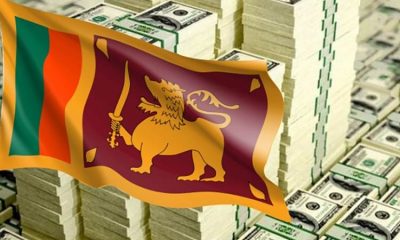
 News5 days ago
News5 days agoSL issues USD 10.4 bn macro-linked bonds
-
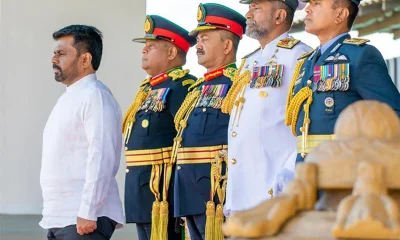
 News2 days ago
News2 days agoOffice of CDS likely to be scrapped; top defence changes on the cards
-

 Opinion6 days ago
Opinion6 days ago‘A degree is not a title’ – a response
-

 Editorial5 days ago
Editorial5 days agoRanil’s advice











